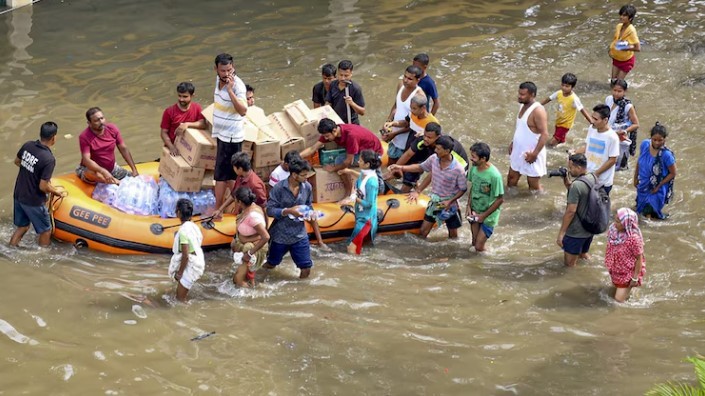
India Faces Dual Challenge of Climate Mitigation and Economic Growth, Highlights Economic Survey
The Economic Survey 2023-24 presented in Parliament underscores India's strategy to tackle climate change while sustaining its development goals. As a developing nation, India grapples with the complex task of mitigating climate impacts and ensuring economic growth.
"Balancing development needs with a low-carbon pathway is a tightrope, especially when financed predominantly through domestic resources," the survey noted. It emphasized that developing countries, including India, are disproportionately affected by climate change due to their existing vulnerabilities and lower resilience. Despite not being major contributors to the issue, these nations are crucial to the global solution. India has committed to significant greenhouse gas emissions reductions through its Nationally Determined Contributions (NDCs), contingent on support from developed countries.
Addressing climate change within development models demands substantial financial resources and technology transfer. Conservative estimates indicate that developing countries require $5.8-11.5 trillion by 2030 to pursue low-carbon development pathways. However, the current flow of these resources is insufficient, necessitating a focus on sustainable economic growth to build resilience against climate impacts.
India is particularly vulnerable to climate change, ranking among the most climate-vulnerable countries globally. The government has launched various initiatives, including seven out of nine missions under the National Action Plan on Climate Change (NAPCC), focused on adaptation. The survey reports that India's adaptation-related expenditure has increased from 3.7% of GDP in 2015-16 to 5.6% in 2021-22, indicating the integration of climate resilience into development plans. However, this also places significant pressure on domestic resources, highlighting the need for enhanced international adaptation finance.
Coastal regions are particularly at risk, with wetland conservation emerging as a key adaptation strategy. Since 2014, India has designated 56 new Ramsar sites, bringing the total to 82, covering 1.33 million hectares.
Looking ahead, India's energy needs are projected to grow 2 to 2.5 times by 2047. The country aims for an orderly transition to a diversified energy mix with a significant share of non-fossil sources, aligning its Net Zero 2070 goal with developmental priorities. This transition requires strategic resource allocation to enhance climate resilience while maintaining social and economic development.
The Economic Survey stresses that continued economic growth is the best safeguard against climate change for developing countries like India. It calls for a balanced approach that addresses climate vulnerabilities while prioritizing essential development objectives.